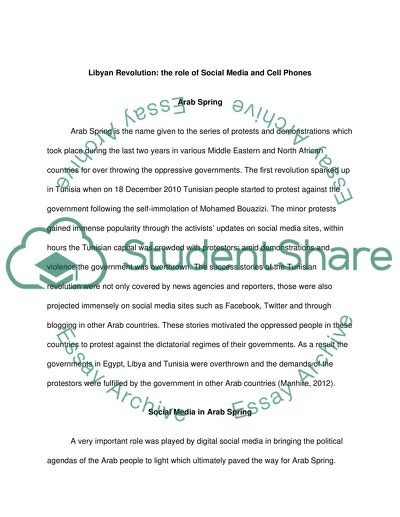Cite this document
(“Contemporary History and the Role of Social Media in the Arab Spring Research Paper”, n.d.)
Contemporary History and the Role of Social Media in the Arab Spring Research Paper. Retrieved from https://studentshare.org/history/1452507-contemporary-history-the-role-of-social-media-in
Contemporary History and the Role of Social Media in the Arab Spring Research Paper. Retrieved from https://studentshare.org/history/1452507-contemporary-history-the-role-of-social-media-in
(Contemporary History and the Role of Social Media in the Arab Spring Research Paper)
Contemporary History and the Role of Social Media in the Arab Spring Research Paper. https://studentshare.org/history/1452507-contemporary-history-the-role-of-social-media-in.
Contemporary History and the Role of Social Media in the Arab Spring Research Paper. https://studentshare.org/history/1452507-contemporary-history-the-role-of-social-media-in.
“Contemporary History and the Role of Social Media in the Arab Spring Research Paper”, n.d. https://studentshare.org/history/1452507-contemporary-history-the-role-of-social-media-in.


